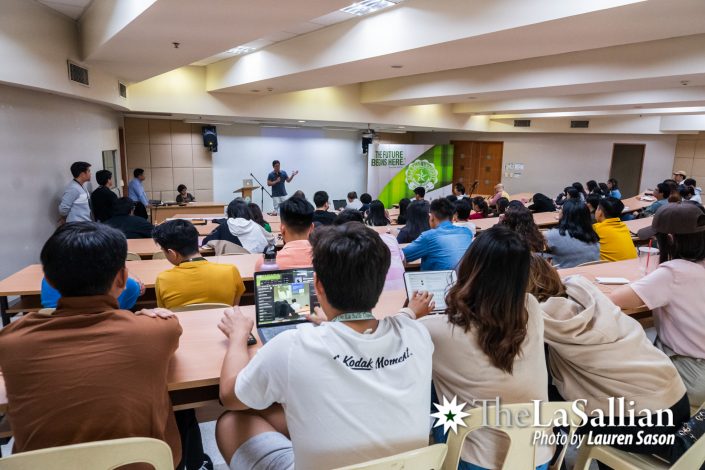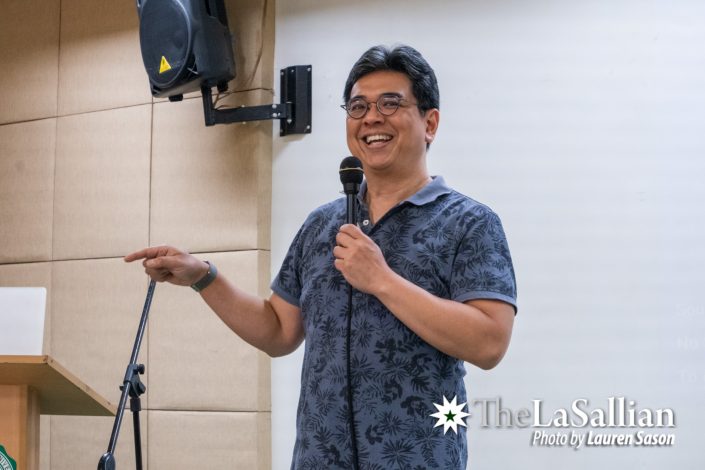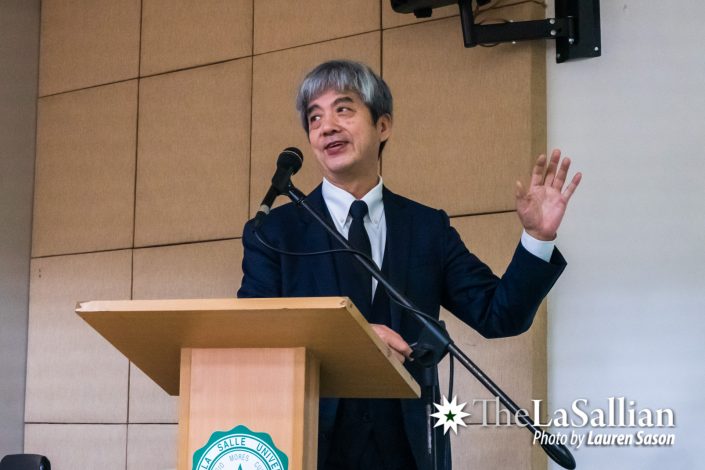Since the 1860s, fossil fuels have remained as the primary energy source in the world—with coal accounting for 38.5 percent of global power in 2018. Rampant usage and unyielding dependence on non-renewable energy sources have contributed to numerous harmful and irreversible effects to the environment such as the accelerated melting of glaciers. These developments have subsequently resulted in resounding calls for cleaner, cheaper, and more efficient alternatives for energy sources. Scientists are currently working to develop reliable sources of renewable energy that can be harnessed from natural sources like the Sun, wind, and running water, with the key objective of reducing reliance on fossil fuels in the future.
In line with this, the Asian Computational Materials Design (ACMD) Workshop is held annually to present how different materials can be modified and optimized for purposes associated with renewable energy and environmental applications.
Last February 28, De La Salle University hosted the plenary session of the 11th ACMD at room A1403 of Br. Andrew Gonzalez Hall, with the theme revolving around hydrogen-based technology and how these can be used in society to provide a renewable energy source.
Potentially hydrogenic design
Understanding any material entails discernment of its physical properties on the quantum scale. This also elicits the manipulation of these properties via mathematical models and simulations—considered a pursuit of “intelligent design”, according to Dr. Hideaki Kasai, president of the National Institute of Technology-Akashi College in Japan.
Normally, characterizing any physical object would require quantum dynamical calculations—a branch of Physics that involves the usage of complex computations to determine the probability of a material’s state before it is measured—which can be lengthy and rigorous.
As such, the Computational Materials Design (CMD), a three-step cyclic process, is presented as an alternative method. The process starts with the simulation of the mechanism of a system, proceeds to ab initio calculations—calculations wherein universal constants are the only inputs—and concludes with the development of the actual system.
The realization of a society utilizing hydrogen as a primary energy source requires a process like CMD. Despite hydrogen being the simplest element, integrating it into current systems and mechanisms like vehicles, fuel cells, and energy sources requires the manipulation of its atomic structure. Given that the foregoing processes entails heavy quantum calculations, CMD would lead to a more efficient transition into the reliance on hydrogen as a source of clean, cheap, and efficient energy.
In bringing about a hydrogen-based society, Kasai stated, “Our main concern is technology, but that’s not enough,” as he highlighted the PEST analysis—Politics, Economy, Society, and Technology—of realizing the incorporation of hydrogen-based technology into human society.
Kasai explained the societal impact of hydrogen as a primary source of energy, “Alternative energy should be green and cheap…[with this mindset] people’s opinions [about alternative energy] will change.” In reality, however, alternative energy has limitations, including high costs and storage difficulties, lowering feasibility and possibility preventing implementation. Nonetheless, increasing dependence on environmentally-friendly hydrogen as a source of energy will presumably reduce reliance on fossil fuels, leading to a cleaner environment with healthier conditions for the public.
Economically, with the launch of the first hydrogen fuel cell vehicle—an automobile that generates electrical energy through a hydrogen-oxygen chemical reaction—in 2014 by Toyota, hydrogen in fuel cells is projected to have high market potential by 2026, with its market size estimated to be at USD42 billion. Going hand-in-hand with Economics is the presence of the government to provide subsidies, and of mass media to publicly promote hydrogen-based vehicles.

In terms of technology, Kasai stated, “Production, storage, and implementation are our main concerns,” and as he emphasized the importance of logistics with regard to transporting hydrogen, particularly in liquid form, which he said is “difficult” as the fluid can easily evaporate. “During transportation [of liquid hydrogen] from Australia to Tokyo, [there will be] no hydrogen left,” he problematized.
Ensuring stability of the liquid hydrogen molecules at the para-hydrogen state—the state wherein the hydrogen molecules are at lowest energy—is the most optimal solution to the problem. Kasai revealed that this is done through an ortho-para conversion process, which minimizes the heat and utilizes palladium that speeds up the ortho-para transformation—from ortho-hydrogen of slightly higher energy into the para-hydrogen state of minimum energy.
Viewing the progression
Following Kasai’s keynote speech, the plenary session featured four case studies on research conducted regarding hydrogen-based technology through CMD.
Dr. Wilson Agerico Diño from Osaka University began the session with a lecture discussing energy and potential energy surface, which is the amount of stored energy within groups of atoms. “Everything is energy. The problems that we have right now are about energy,” he established. An example of an energy problem is the change in an object’s state; as corroborated by the Second Law of Thermodynamics, reversing an object’s state will require more energy than the initial transformation, suggesting that some processes are strictly unidirectional.
The next speaker, Dr. Elvis Arguelles from The University of Tokyo, started a discussion about ab initio simulations as tools for CMD. Arguelles first discussed the optimization of ortho-para conversion for hydrogen gases before briefly going through the capability of artificial intelligence to predict the property of molecules from two-dimensional chemical structures to emit energy within the structures’ centers of mass.
The last two lecturers were from the Physics Department of DLSU. Dr. Gian Paolo Bernardo established the linear relationship between the adsorption or adhesion of hydrogen and carbon atoms and the given temperature of their surroundings. Through the ab initio experiment, Bernardo discovered that increasing temperature corresponded to a proportional increase in adhesion between the hydrogen and carbon atoms.
Finally, Jessiel Siaron Gueriba discussed how copper atoms arranged in stair-like steps can adhere to methyl chloride, which is used in producing silicone. Due to their asymmetry, such step-like surfaces have regions of varying adsorption rates identified by CMD; these areas can be utilized to minimize ortho-para conversion, generating hydrogen energy.
The seminar served as an avenue to introduce the idea of CMD as an optimized method for modifying materials in hopes of exploring solutions to various problems such as finding sources of renewable energy. Through CMD, the ambitious idea of using hydrogen as a primary energy source may gradually become a reality.
with reports from Kenneth Tan


